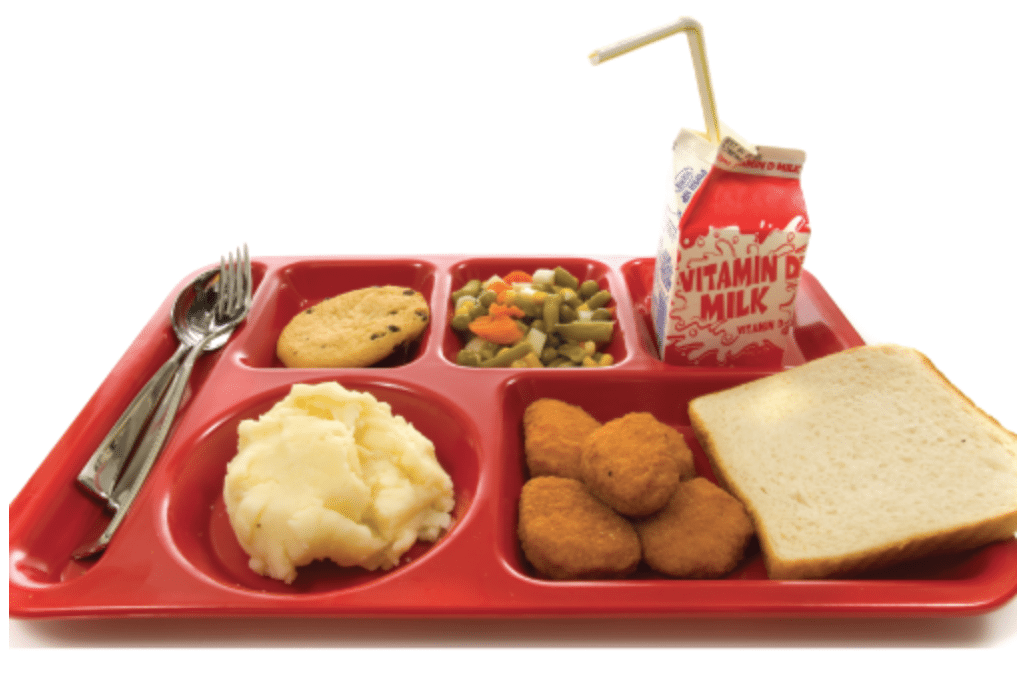By Megan Boyle, Editorial Director, Healthy Child Healthy World
Reproduced with the permission of the Environmental Working Group
www.healthychild.org.
 As parents, we do the best we can to give our children a healthy diet. We read ingredient lists, shop conscientiously, pack healthy lunches and cook meals at home whenever possible.
As parents, we do the best we can to give our children a healthy diet. We read ingredient lists, shop conscientiously, pack healthy lunches and cook meals at home whenever possible.
But big holes in government regulations about food labeling mean that even the most attentive parents can miss some crucial information about what’s going into their children’s mouths.
Here are five worrisome things your children are eating – and what you can do about it:
Hidden Trans Fat
Over the next three years, food companies must phase out partially hydrogenated oils – a major source of artery-clogging trans fats – under a recent directive from the Food and Drug Administration.
So parents have only a few more years to worry about this? Not exactly.
For one thing, partially hydrogenated oils are just one of many sources of trans fat, which include refined oils, emulsifiers, flavorings and colors. Lobbyists in the food industry are also fighting for an exemption to the phase-out that would allow them to continue using these partially hydrogenated oils in small amounts.
They wouldn’t even have to tell you about it. The FDA regulation would keep in place a key loophole. If a food product contains less than half a gram of trans fat, that number can be rounded down to zero on the Nutrition Facts label.
Until this loophole is closed, your kids could well be eating an unknown amount of harmful trans fat, and those trace amounts can add up fast.
What can you do? Check food labels for the word “hydrogenated.” If an ingredient list includes this kind of oil, but the trans fat amount reads zero, watch out. EWG identified several kids’ lunch favorites that have hidden trans fat, so start eliminating these from your diet.
Here’s a list of go-to kids’ snacks (such as peanut butters, crackers and granola bars) that are already — and accurately — trans fat-free. Visit EWG’s Food Scores to find more foods that are truly trans fat-free.
Genetically modified organisms (GMOs)
Around the world, 64 countries require GMO labeling. The United States is not among them. Studies have not determined that GMOs are harmful to eat, but there are reasons to be concerned: limited research into their safety, a rise in “superweeds” that resist the herbicides used with GMOs, and, consequently, more overall pesticide use.
What can you do? If you want to avoid eating GMOs, focus on the five most commonly genetically engineered crops: corn, canola, beet sugar, soybeans and cotton seed. You can feel confident you’re avoiding GMOs if you buy food that is USDA-certified organic or has the “Non-GMO Project Verified” seal on the label. EWG’s Food Scores also identifies ingredients that are likely to be genetically engineered.
To join the fight for transparency in food labeling, raise your voice to defeat the House-passed DARK (Deny Americans the Right to Know) Act, HR 4432, which would prohibit states from requiring that genetically modified food be labeled. Here’s a way to tell your senator that this issue matters to you.
Wood pulp
How does wood pulp get into your kids’ food? “Added fiber.” Food manufacturers extract fiber from industrial byproducts such as wood pulp. They grind it into a powder or create it chemically in a lab, then add it to all kinds of foods – from bread to ice cream. The powder increases fiber content, which makes the food appear to be healthier.
We all know that a high fiber diet is good for us, but the source of that fiber matters. The potential health benefits of added fibers are less well understood, and we don’t know exactly how the extraction process affects its healthfulness.
What can you do? Check food labels for “cellulose” and “cellulose powder” or search for these ingredients in your favorite foods using EWG’s Food Scores. In addition to wood pulp, keep an eye out for the added fiber keywords “inulin,” “polydextrose” or “chicory,” which have a similarly dubious health benefit.
To get the health boost of fiber without the question marks, serve your family plenty of fruit, vegetables, beans and whole grains.
Added Sugar
Do you know how much sugar your kids are eating? Probably not.
Besides the obvious sources such as candy, sugar hides in places you don’t expect (like pasta sauce) and in greater amounts per serving than you expect (we’re looking at you, ketchup). Foods that are marketed as healthy for children can be among the worst offenders. EWG looked at more than 1,500 breakfast cereals and found that a child who eats a daily bowl of cereal can consume about 10 pounds of sugar in a year.
Added sugar crowds out essential nutrients in your children’s diet, causing them to fill up on calories that don’t support their growth and development. And labels don’t help us.
The FDA has proposed rules to add valuable information about sugar to the Nutrition Facts food labels – both the total amount of added sugars and the percent Daily Value – as they do for fats and sodium. But until this regulation takes effect, parents are often in the dark about just how much added sugar their kids are eating.
What you can do: Do the best you can to limit sugar for your kids. Serve and encourage a healthy, balanced diet and cut back on common sources of added sugar: candy and sweet treats, sugary drinks like soda and juice, processed foods and cereal. Check out these tips for reducing sugar in your kids’ breakfasts and search for your family’s favorite foods in EWG’s Food Scores. This database of more than 80,000 foods will tell you important details about added sugar.
Bisphenol A (BPA)
The toxic hormone disruptor bisphenol A (BPA) may be leeching into your kids’ foods from the lining of metal food cans.
EWG’s 2014 survey found that more than 75 brands are using cans with BPA-based epoxy linings. Studies suggest that young children and the developing fetus are most vulnerable to the health dangers of BPA. And, alarmingly, for most products there’s no reliable way for parents to know whether a canned food is BPA-free.
What can you do? Visit EWG’s BPA in Canned Food Report to learn which brands do and do not use BPA to line their cans. If you don’t know whether a food can contains BPA, ask the manufacturer. Rinsing the food may help lower the amount of BPA you ingest. Never heat food in metal cans. Look for foods in other containers (such as glass jars) and replace canned food with fresh, dried or frozen foods whenever possible.
















